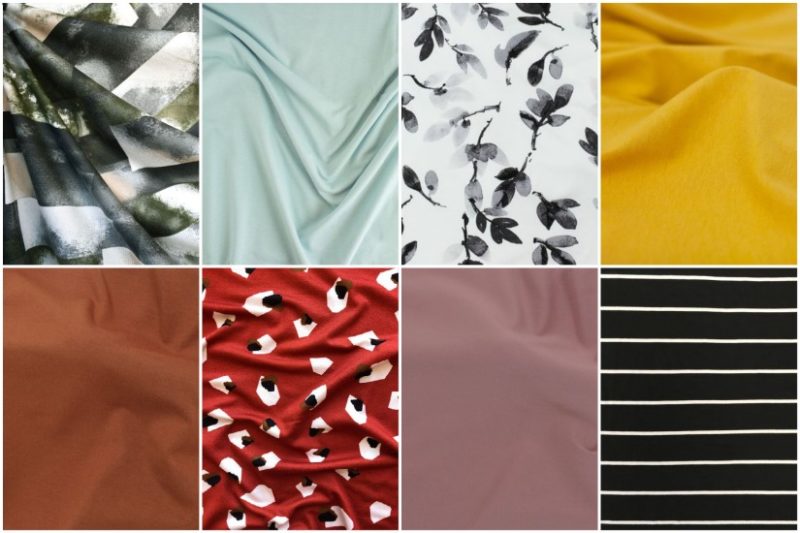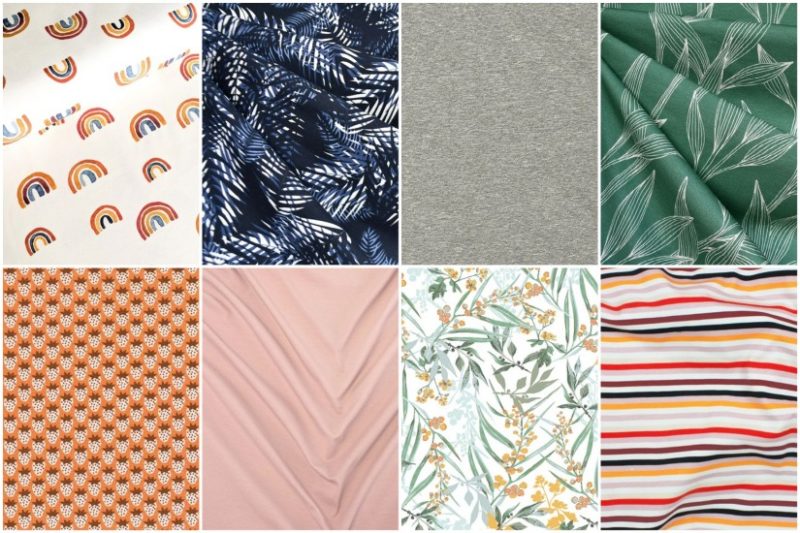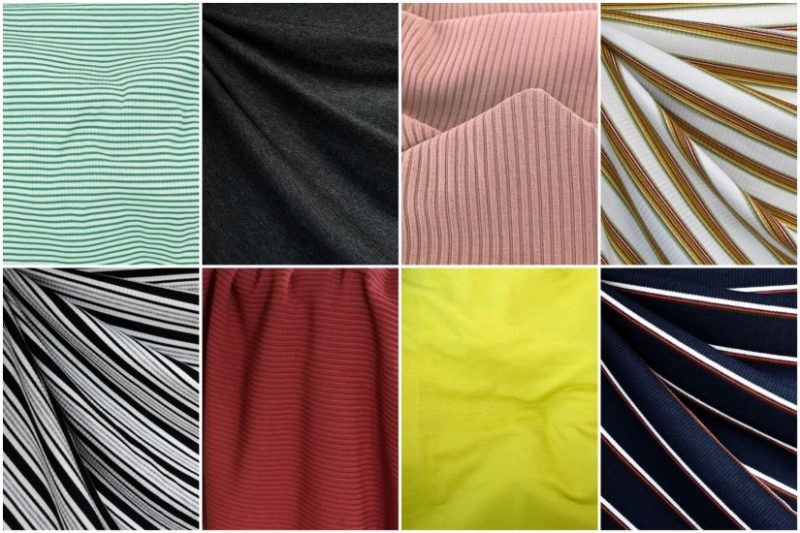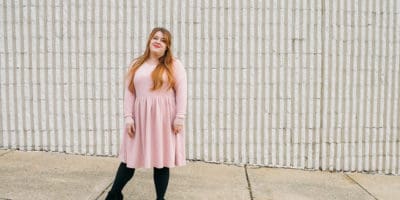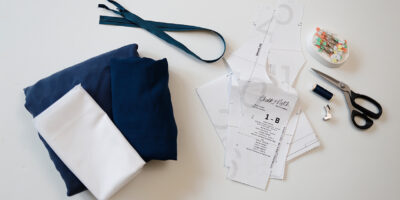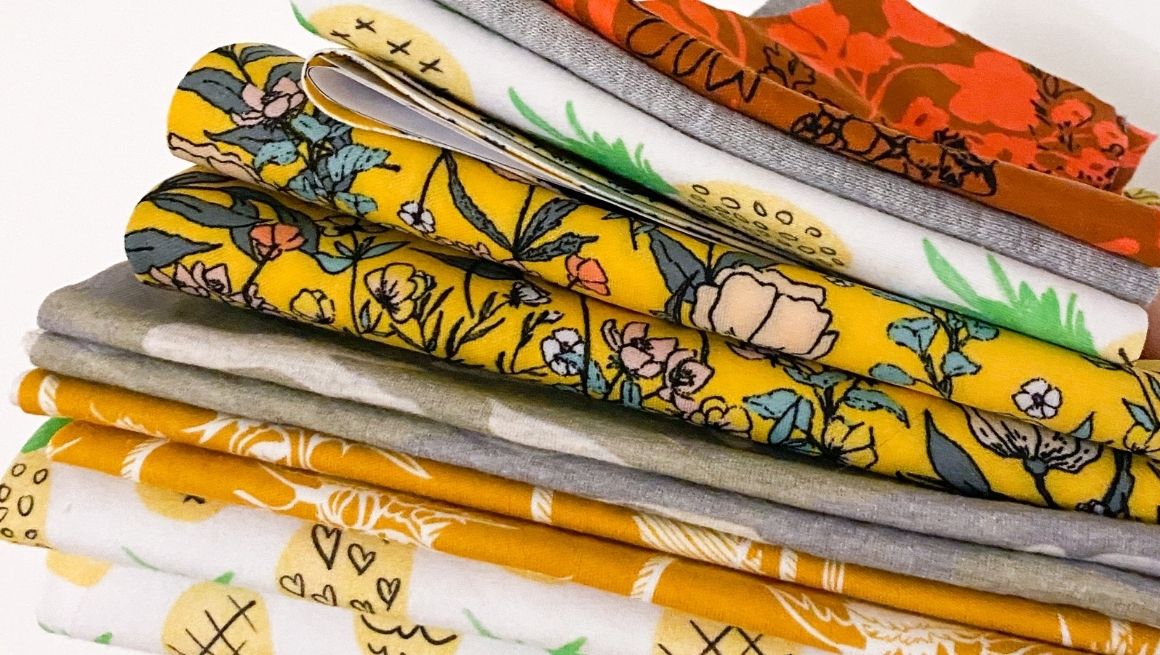
Now that the Pony, Waterfall, and Pixie and respective mini patterns (shop them all here) have been updated and released, it’s time to talk about our favorite subject: fabric. Since all three patterns have similar fabric recommendations, I’ve compiled guidance for sewing with knit fabric, necessary notions and sources into one post.
BASIC TIPS FOR SEWING WITH LIGHT TO MEDIUM WEIGHT KNITS
First things first, let’s go over a few simple tips for sewing with knits. Have you been afraid to tackle sewing knits or just want a little extra guidance? Follow these tips, keep trying, and remember that with a little practice, you can master the necessary skills.
Recommended Notions
- You will need to use a ball point or stretch needle in your regular sewing machine or serger (overlocker) when sewing with knits. The shape of the If your fabric choice is lightweight, opt for a size 75/11 stretch needle (here). If your fabric is more of a medium weight, you might be able to get away with using a size 80/12 or 90/14 stretch or ball point needle. However, if you find yourself getting lots of skipped stitches, change to a fresh needle or switch to the smaller size stretch needle.
- Optional: Use a double needle (here) for a professional looking double stitch on your hems. Make sure to slightly increase your stitch length and practice your stitching to find the right length with your specific fabric.
- Optional: Use a lightweight knit interfacing (here) or twill tape (here) to stabilize shoulder seams in lighter knits.
- Optional: A fusible hem tape like Heat N Bond SoftStretch Lite (here) can be used to stabilize hems.
Stretch Percentage
In order to determine if a knit fabric is suitable for a specific pattern, it’s important to check stretch percentage. Chalk and Notch patterns that use knit fabrics have chart that looks like the one below in the section labeled “Sewing With Knits.” Print that page out at 100% and use your fabric to determine the amount of stretch. The Pony, Pixie, and Waterfall patterns all recommend a fabric with 75-100% stretch. If your chosen fabric doesn’t have at least 75% stretch, consider using ribbing or a stretchier knit for neckbands and armbands.

Here’s how to check stretch and recovery in knits:
- Fold fabric across the width (crossgrain) fo the fabric.
- Place two pins 4″ (10cm) apart at the top of the fold.
- Stretch fabric towards the right (holding the left pin in place) to its maximum stretch point.
- Let the right pin go so you can test the recovery. It should come back between 0 and 10% if your fabric has 100% to 90% recovery.
Sewing with Knits
One common misconception in sewing is that you need an overlocker (serger) to sew with knits. In some situations, an overlocker can be a valuable tool but, there are still some times that I prefer to just use my home sewing machine instead of the overlock machine. Here are some quick tips:
- When sewing joined seams, set your machine to a narrow zig zag or stretch stitch (sometimes called a lightning stitch). Play around with your machine settings to find the stitch size that works best for you and your particular fabric.
- For seams where you will not be utilizing the fabric stretch (ex: attaching the ruffle on the Waterfall Raglan), you can also use a regular straight stitch.
- When hemming, use a twin needle, a narrow zig zag stitch, a stretch stitch or coverstitch.
- If you find that your fabric stretches while sewing, try a walking foot.
- Having trouble keeping your hems flat? Use a fusible hem tape to keep things in place while stitching.
FABRIC SOURCES
Now that we’ve gone over the basics, it’s time for my favorite part, selecting fabric. The Pixie, Waterfall, and Pony patterns all call for a light to medium weight knit with 75% to 100% stretch. Recommended fabric types are: rayon jersey, bamboo jersey, modal jersey, cotton spandex, and rayon french terry. Some rib knits may also be suitable.
Find more fabric inspiration and sources on our Light to Medium Weight Knits Pinterest board. We’ll continue to pin to this board from time to time so you’ll have up to date fabric sources.
Viscose/Rayon/Bamboo/Modal Jersey
While there are some nuances to the differences (mostly related to fiber sources and manufacturing) between viscose rayon, bamboo, and modal jersey fabrics, I’ve combined them in this section because their drape and hand will be similar. These fabrics are going to give you the best drape and are often the lightest weight out of all the recommended types shared here. However, they’re also likely to be the trickiest because of their weight and may have a tendency to “grow” as you sew.
Quick tip: If you find your machine trying to “eat” your lightweight knits at the beginning or end of a seam, try starting a few stitches in from the edge or putting a bit of tissue paper under the fabric to help it feed properly.
Cotton Spandex/Lycra
Cotton spandex (also called cotton lycra) jersey knits will still have plenty of stretch but be a bit more stable than knits of the rayon/viscose variety. It’s relatively easy to source and there are a wide range of solids and fun prints readily available. The one drawback to this substrate is less drape and garments made with this fabric will have a boxier appearance.
Rayon French Terry and Rib Knits
If you’re a fan of texture or looking for a cozier fabric option, try a rib knit or rayon french terry. These fabrics vary widely in drape and stretch percentage so use your personal discretion when deciding if they feel suitable for your project.
Thank you for reading! If you have further questions about sewing or sourcing knit fabrics, feel free to contact us or ask questions in the Chalk and Notch Patterns Facebook group (here).

